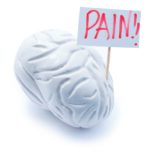In fact, the prevalence of chronic widespread pain and fibromyalgia (FM) are significantly higher among patients with RA than in the general population, with some estimates suggesting a prevalence of 20–40%.1 A large Canadian cohort of patients with early RA observed that the incidence of FM was highest during the year after the inflammatory arthritis diagnosis was made.2
When there is discordance between what the patient and physician consider to be ongoing disease activity, it is likely caused by pain. Rheumatologists seek to achieve RA remission by eradicating all joint swelling and reducing disease activity scores to the lowest levels. However, for most patients, eliminating pain is the critical issue, often taking precedence over reducing synovitis.
Although these goals intersect, they may not fully overlap. We may talk past one another as we tell our patients that their RA is in clinical remission while they wonder, with a fair degree of skepticism, why they are still experiencing pain.
A History of Pain
The concept of pain has long confounded clinicians and patients alike. Pain is a complex experience. Traditional Chinese medicine viewed pain as being caused by a thermal imbalance, a clash between heat and cold, instigated by the two opposing principles of yin and yang. Although many of the ancient philosophers considered the heart to be the seat of the soul and all sensations, including pain, Galen (he of dolor, calor, rubor, tumor fame) recognized the brain as the organ of feeling and placed pain into the sphere of sensation. By carefully observing patients in pain, he proposed that pain was a specific characteristic that corresponded to an unpleasant sensation caused by a previously nonpainful stimulus, a phenomenon now known as allodynia.3
From the 19th century through present times, identifying how pain is processed drove discovery in neuroanatomy and neurology as the search for the physical pathways carrying pain resulted in the meticulous dissection of the peripheral nerves, the spinal cord and the cerebral hemispheres.
About 50 years ago, the concept of the gate control theory of pain gained wide acceptance and, although it was subsequently proved to contain flaws, it served the critical purpose of focusing on the importance of pain modulation in pain perception. The theory incorporated newly discovered mechanisms of presynaptic control of transmission from large and small sensory afferents, which was proposed to gate incoming information depending on the balance between these inputs, providing an explanation for how pain perception could be modified by ongoing or prior experiences.4 Clinicians could now integrate affect and mood into the pain equation. It challenged the notion of a tight linkage between stimulus and reaction, because clinical experience suggested otherwise.
